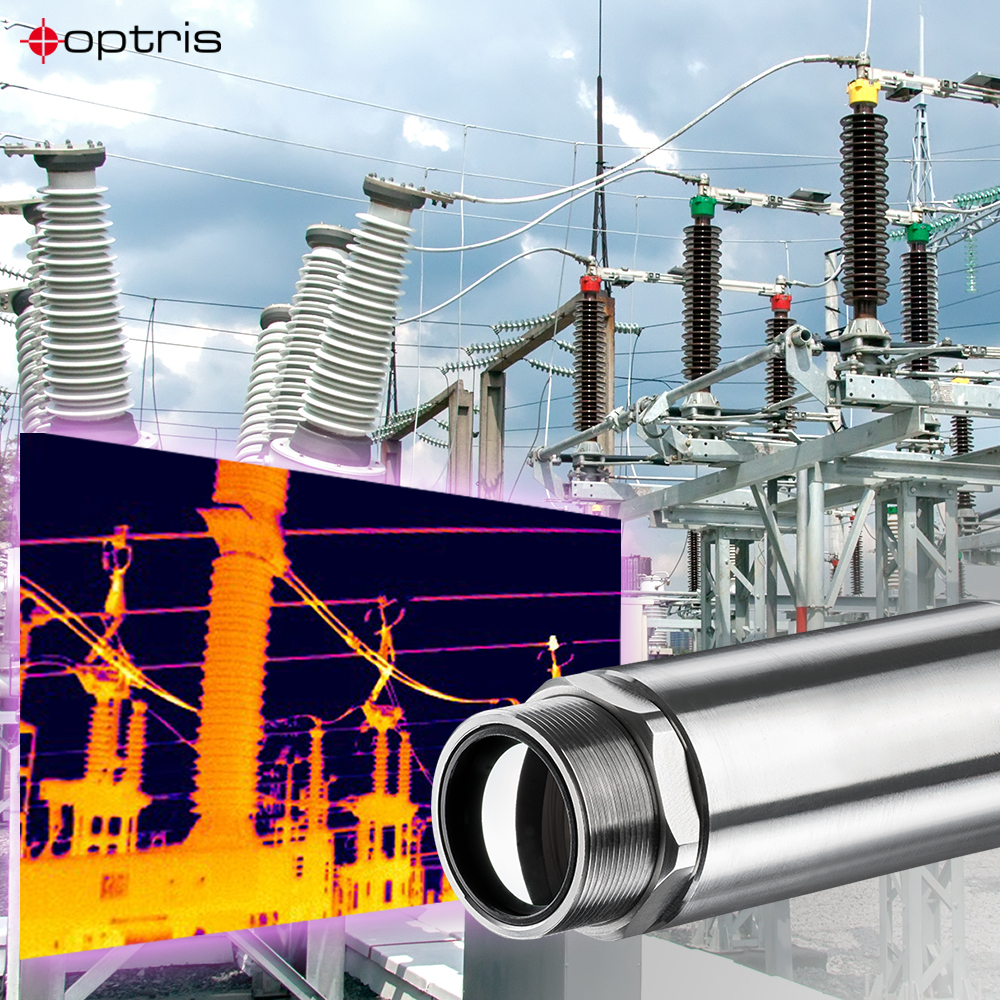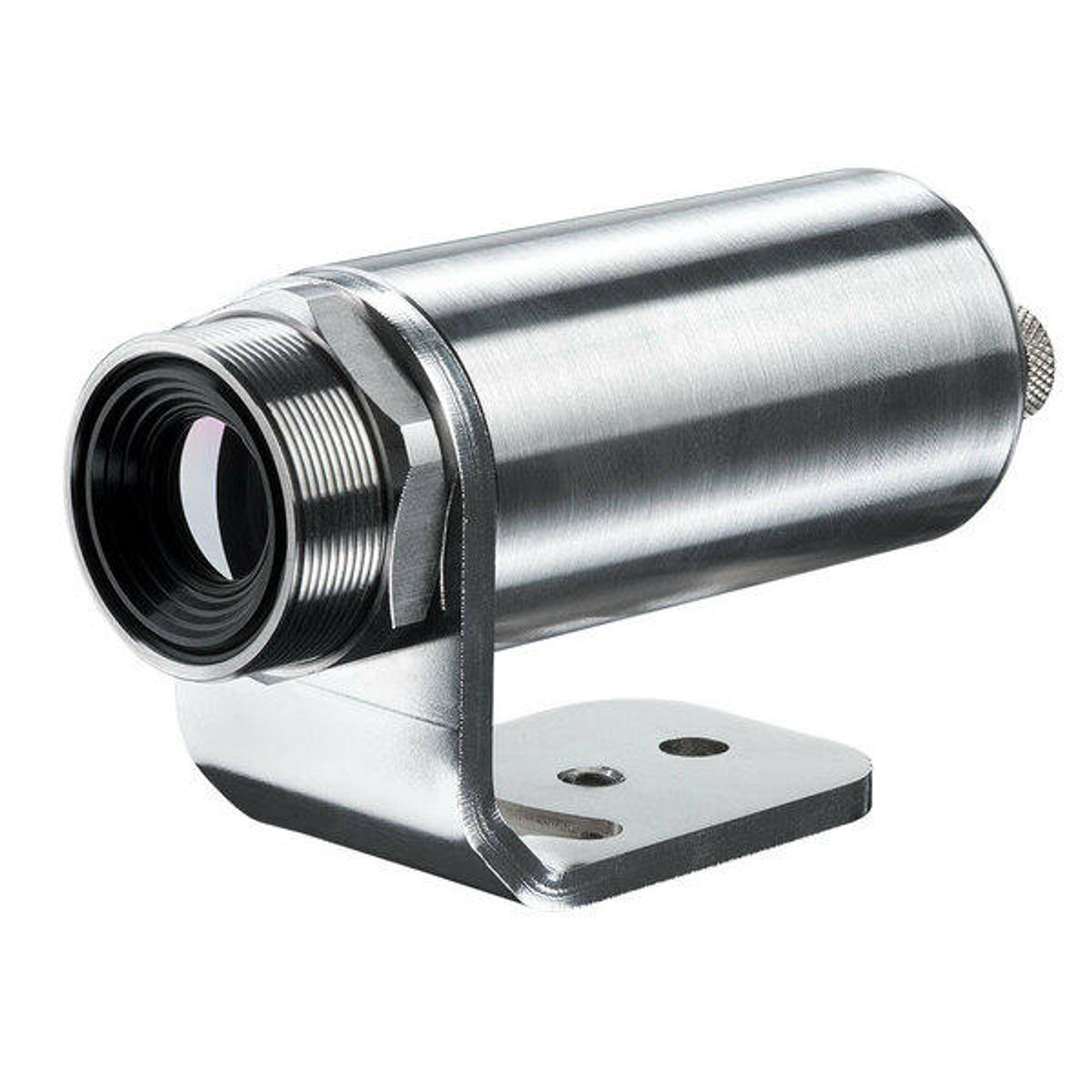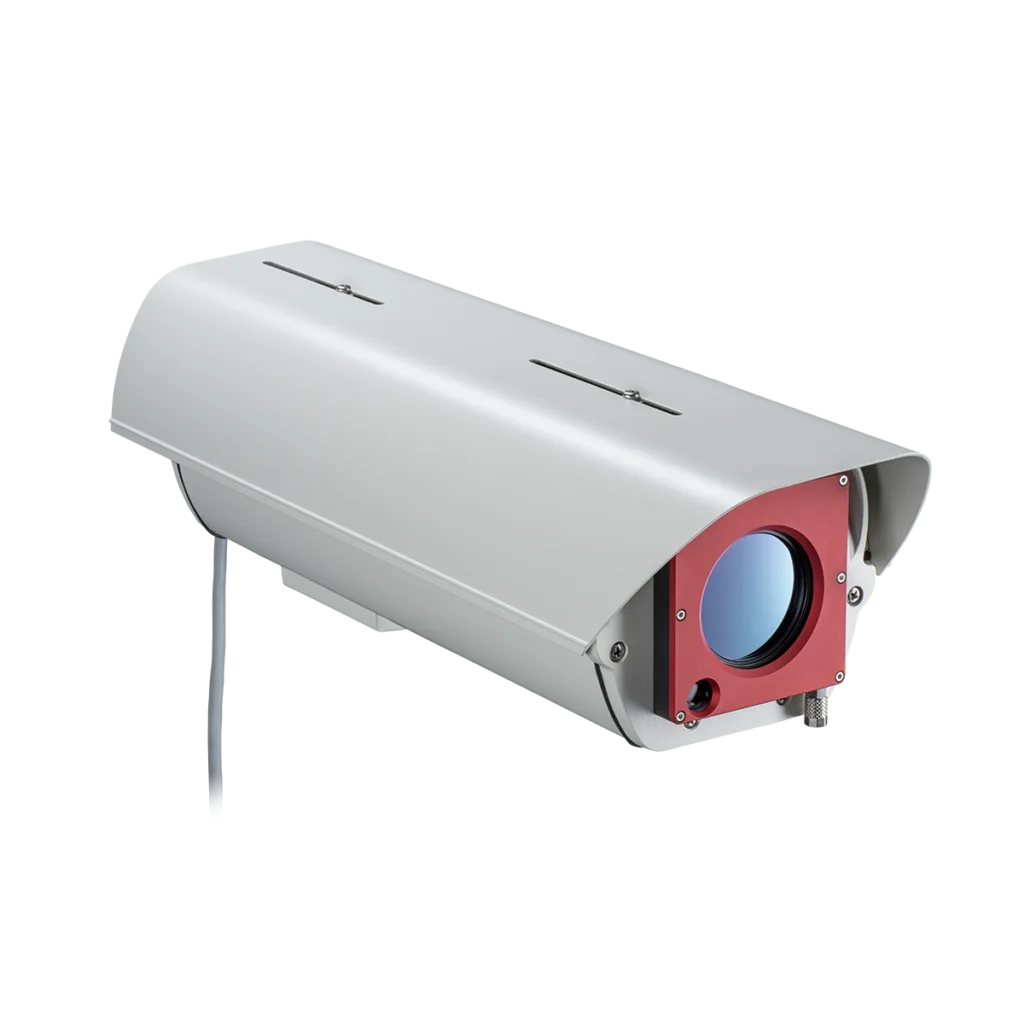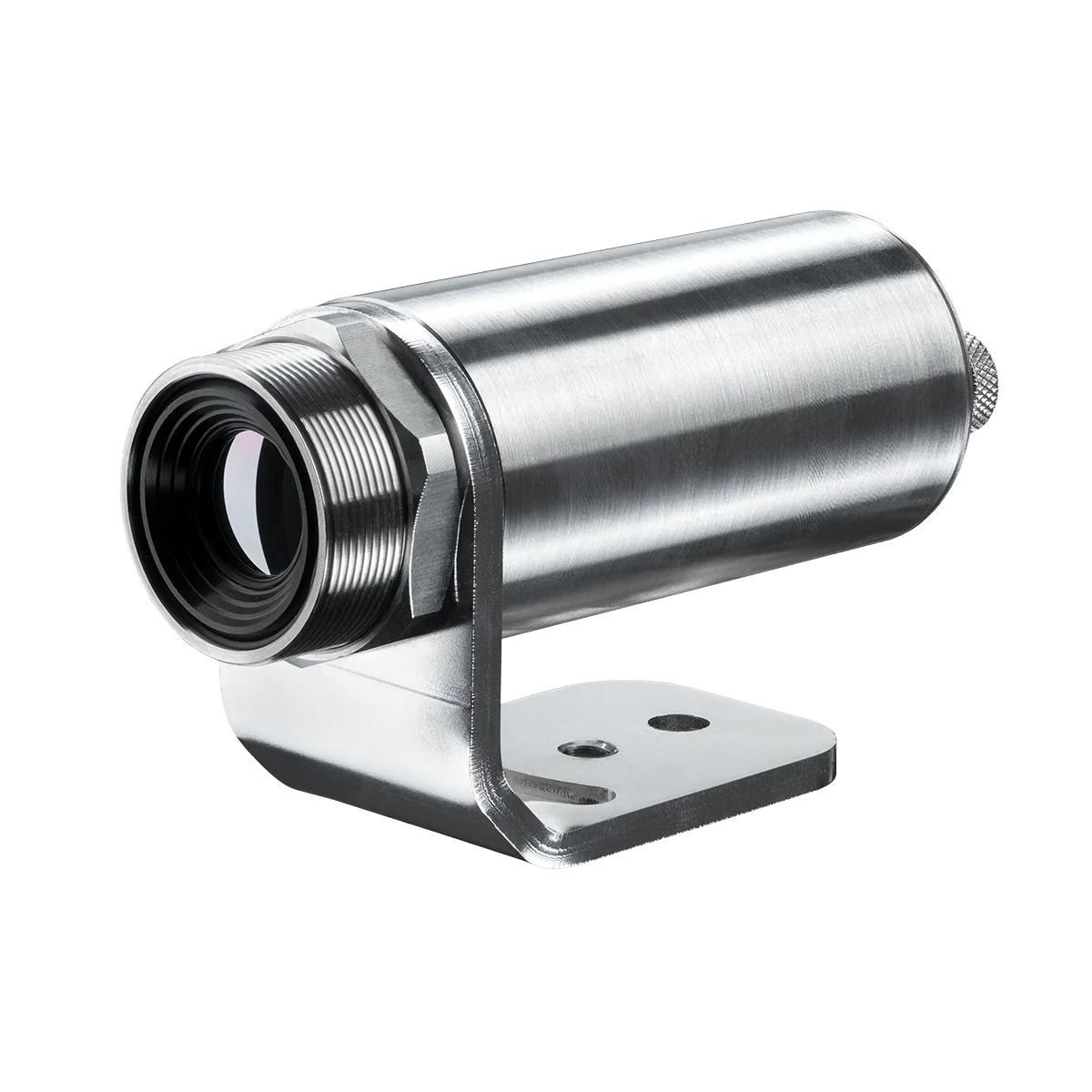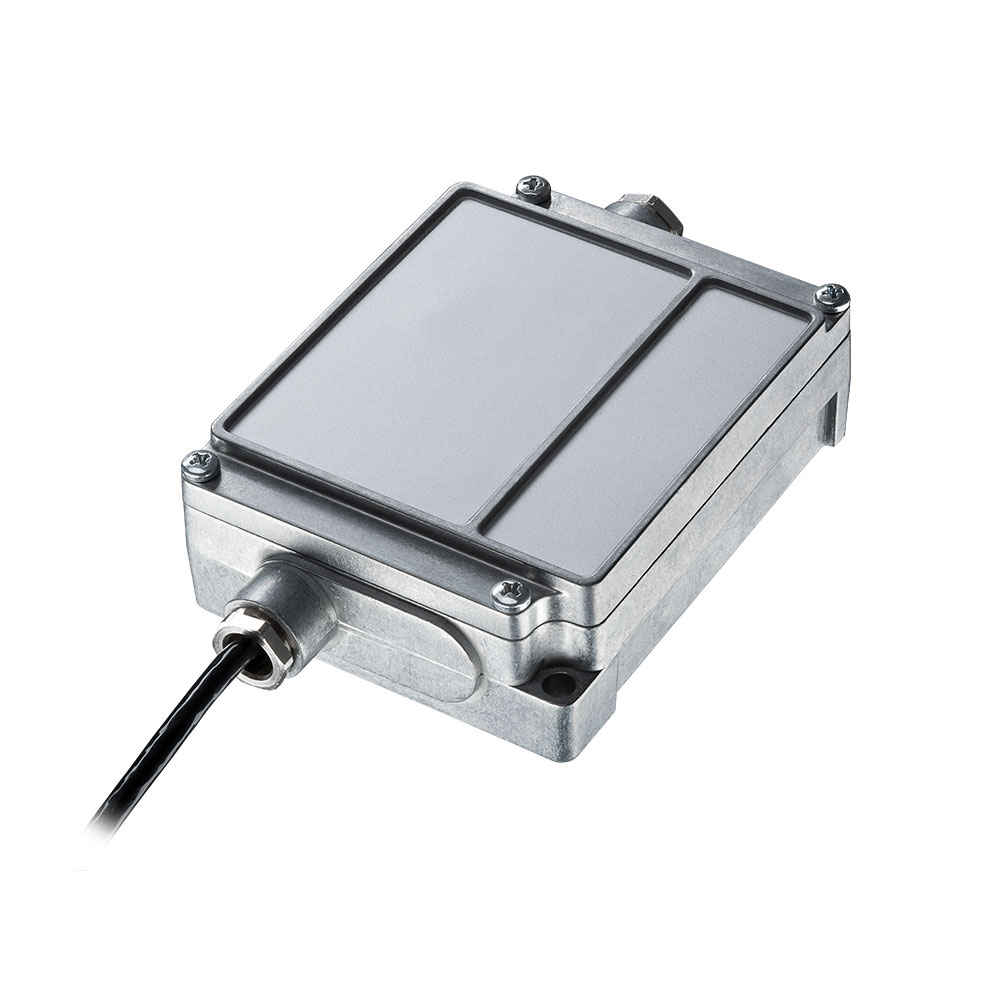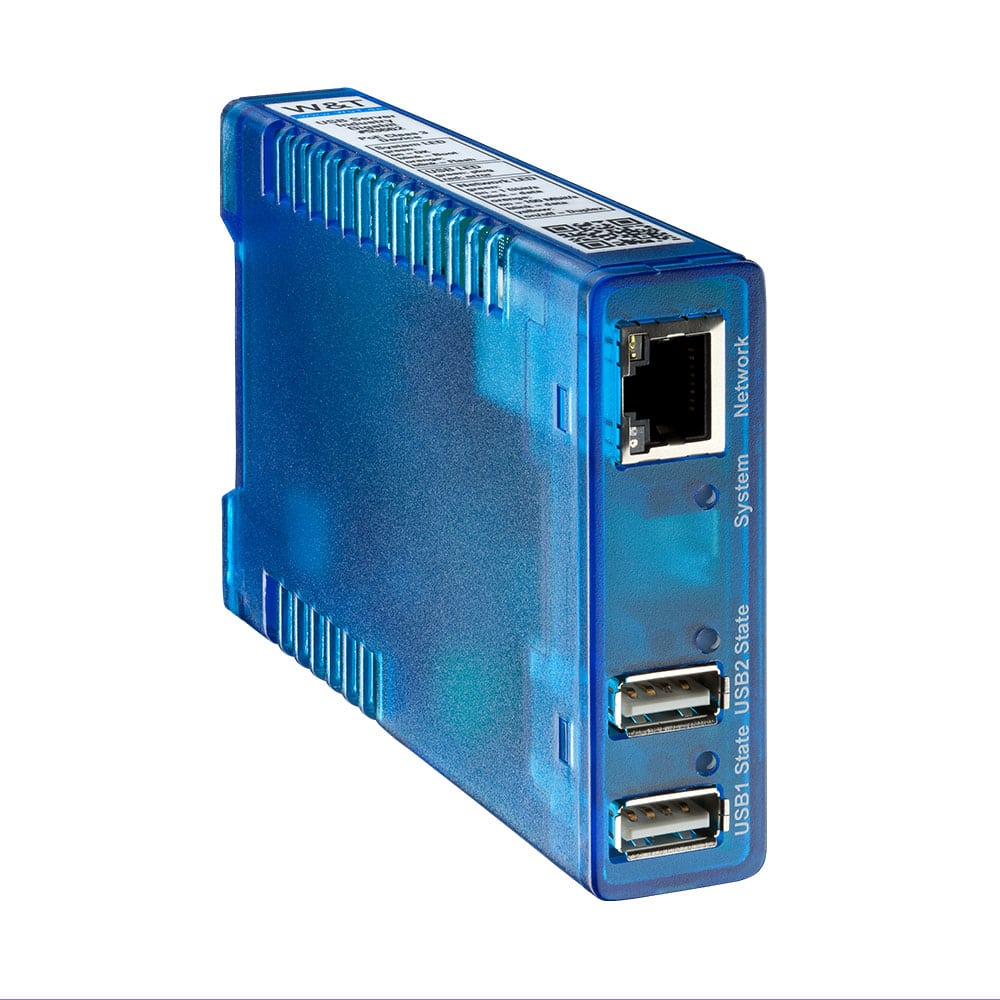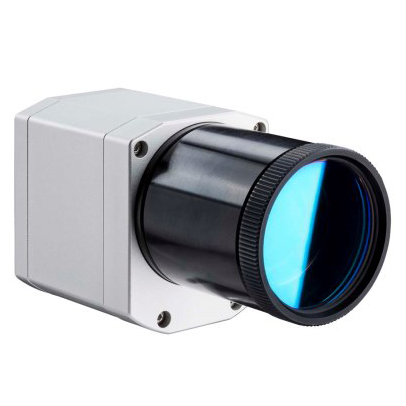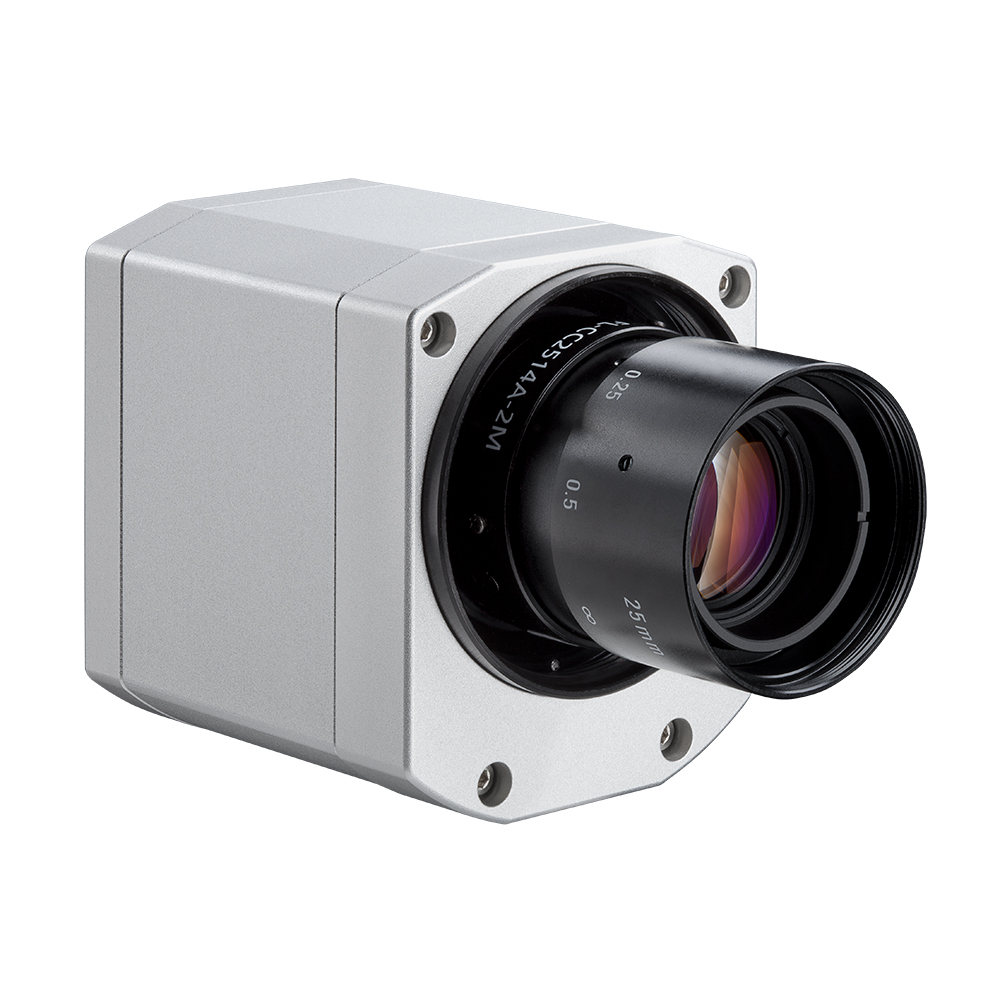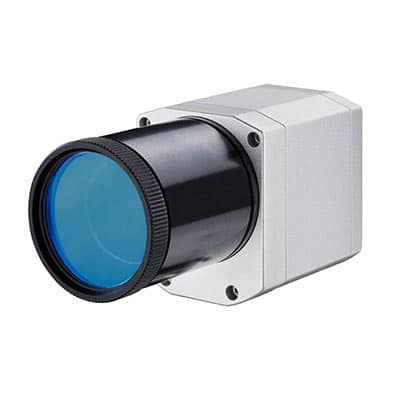Thermal imaging cameras to suit all temperature requirements. Browse our best-selling industrial infrared cameras for all applications and industries. Get the lowest prices available in the UK and Ireland. Request a free quote today.
Fixed Industrial Thermal Imaging Cameras for Industries and Businesses
What is a Thermal Imaging Camera?
A thermal imaging camera creates a digital image of an environment by mapping the temperature of its view. Every object and surface has a heat signature, created by the energy it transmits, known as infrared (IR) energy.
Thermal imaging cameras, or visual camera, detect infrared data and convert it into an electronic image with colours indicating temperature variation. They are non-contact and often handheld temperature-sensing devices detecting and displaying object temperature as images.
In short, a thermal imager can:
- Detect and capture heat emitted by objects
- Convert heat into visual images
- Can see temperature variations in different objects and environments, even in darkness
By utilising industrial thermal imaging and radiometric cameras in your application, it’s possible to learn more about your process in a shorter time than ever before. Improve the quality of a manufactured product, reduce the cycle times of machines or reduce your energy usage.
If you have any questions or are wondering which is the best thermal imaging camera for your application, please get in touch.
Our UK team is on hand to assist with any products available in our industrial process monitoring camera range. Take a look at our infrared thermometers.
What Can Thermal Imaging Detect?
Thermal imaging cameras have revolutionised the way professionals across various industries work. An infrared detector can capture images of heat, allowing experts to see things the naked eye cannot, making them an essential tool for many businesses.
Thermal imaging cameras detect infrared heat, which all objects emit, and the greater the temperature, the higher the energy released.
For instance, consider placing your hand near a recently used stove to gauge its warmth – the heat we sense in the air is actually infrared radiation.
Thermal imagers employ sensor arrays to capture this heat energy and generate visual representations and precise mappings of heat distribution.
What Are Infrared Cameras Used For?
Infrared imaging cameras, also known as thermal cameras or thermal imaging cameras, are used to detect and capture the heat emitted by objects and convert it into a visual, thermal image. A thermal sensor can see and display the temperature variations in different objects and environments, even in complete darkness.
Infrared cameras find various applications, such as identifying heat leaks in buildings, detecting electrical malfunctions, conducting thermal inspections in industrial settings, and assisting in search and rescue operations by locating individuals based on their body heat.
Benefits of Using Thermal Imaging Cameras
The use of thermal imaging cameras offers numerous benefits across various industries and applications.
Here are some of the key benefits of using a thermal imaging camera:
- Heat detection: Thermal imaging cameras can detect and visualise heat signatures, allowing users to identify hot and cold spots, detect temperature variations, and identify heat-related issues.
- Non-contact measurement: Thermal imaging cameras can measure temperatures without physically touching the object, making them useful for monitoring equipment, buildings, and other inaccessible or hazardous areas.
- Condition monitoring: Thermal imaging can be used for predictive and preventive maintenance, as it allows users to identify potential problems in electrical systems, mechanical equipment, and building infrastructure before they become critical.
- Energy efficiency: Thermal imaging can help identify energy inefficiencies in buildings, such as poor insulation, air leaks, and HVAC system issues, allowing for targeted improvements and cost savings.
- Safety and security: Thermal imaging cameras can be used for security and surveillance applications, as they can detect the presence of individuals or animals in low-light or obscured conditions.
- Medical and healthcare applications: Thermal imaging can be used in medical settings for early detection of certain conditions, such as inflammation, circulation issues, and skin cancer.
- Research and development: Thermal imaging cameras are valuable tools for scientific research, product development, and quality control in various industries, such as aerospace, automotive, and electronics.
- Ease of use: Modern thermal imaging cameras are often lightweight, portable, and user-friendly, making them accessible for a wide range of applications.
The specific benefits of a thermal imaging camera can vary depending on the application, the camera’s capabilities, and the user’s needs. Careful consideration of the intended use case is important when selecting the appropriate thermal imaging camera.
Applications & Industries for IR Sensor
- Security and surveillance
- Law enforcement
- Firefighting
- Electrical maintenance
- Building inspections
- Industrial monitoring
- Veterinary medicine
- HVAC
- Medical diagnostics
- Automotive
- Research and development
If you’re wondering how thermal cameras work, the benefits of thermal cameras, and how you can improve efficiency with thermal imaging cameras, have a read of our comprehensive guides.
Find The Best Thermal Camera For Your Needs
When choosing an industrial thermal camera for professional use, there are several key factors to consider. Infrared resolution plays a crucial role in capturing clear images, while sensitivity ensures the detection of even small temperature differences.
Durability is essential for withstanding harsh environments, and ample storage space with on-the-spot image analysis is beneficial.
Additionally, the temperature range and scale should be evaluated to ensure accurate heat level measurements. A high refresh rate is important for real-time imaging when using a thermal detector. Connectivity options like Wi-Fi or USB enable seamless data transfer.
Best Thermal Imaging Cameras
Optris, FLIR, Seek, and Fluke are among the leading brands of professional thermal imaging cameras. Each brand offers thermal devices with unique features and capabilities tailored to different industries and applications.
These features include a wide range of options, user-friendly interfaces and affordable pricing.
At Process Parameters, we supply Optris thermal cameras which are renowned for their next-level thermography. From high temperature thermometers to thermal cameras for condition monitoring and early fire detection, we can help. If you’re looking for an infrared sensor for a specific use, contact our team today.
FAQs about Thermal Imagers
What are thermal imaging cameras used for?
Thermal imaging cameras, equipped with thermal lenses, are used for a variety of purposes, including detecting heat loss in buildings, identifying electrical failures, monitoring industrial equipment, conducting search and rescue operations, and even detecting wildlife in the dark.
The ability to capture images based on heat signatures allows for non-contact temperature measurements and helps identify anomalies that may be invisible to the naked eye.
Thermal cameras are used for troubleshooting, ensuring machinery and equipment run correctly and efficiently, by providing a lens through which the invisible becomes visible.
How do thermal imaging cameras work?
Thermal imaging cameras work by detecting infrared radiation emitted by objects and converting it into visible images. The camera’s sensor detects the temperature variations of different objects and translates them into a colour spectrum detected by thermal imaging cameras.
Can thermal cameras see through walls?
Thermal imaging cameras are used for detecting and measuring infrared radiation, including thermal radiation, emitted by objects. While they can detect heat through solid surfaces like walls, their effectiveness depends on the thickness and material of the wall. Thin walls made of materials such as drywall or wood are more permeable to thermal radiation than thick walls made of brick or concrete. However, it is important to note that thermal imaging cameras cannot see through metal or other reflective surfaces, which can reflect thermal radiation away from the camera.
Do thermal imaging cameras work?
Yes, thermal imaging cameras work by detecting the heat emitted by objects and converting it into a visible image that can be seen on a screen. These cameras are used in a variety of applications, such as industrial inspections, building diagnostics, search and rescue operations, and even medical imaging.
The technology behind thermal imaging cameras has been around for several decades and continues to evolve with new advancements in sensor technology and software algorithms. With the help of an infrared light sensor, thermal cameras can capture images that show how much heat objects are giving off, providing valuable insights in various fields.
Thermal cameras see the world very differently from how the human eye does, as they use infrared (IR) light instead of visible light to create an image.
What factors should be considered when choosing a thermal imaging camera?
When choosing a thermal imaging camera, several factors need to be taken into consideration. Firstly, the intended use of the camera will dictate its required resolution, sensitivity and temperature range.
Additionally, the size and weight of the camera may be important if it needs to be portable or mounted on a drone or vehicle. Battery life and storage capacity are also crucial considerations for extended use in the field. Finally, the price of the camera should be evaluated against its features and capabilities to ensure that it provides value for money.
How can a thermal imaging camera help with energy efficiency in buildings?
Thermal imaging cameras can be an excellent tool for enhancing energy efficiency in buildings. These devices use infrared technology to detect heat signatures, which can help identify areas of a building that are losing heat or letting in cold air.
By using thermal imaging cameras, building managers and engineers can locate areas where insulation needs improvement, windows need sealing, or HVAC systems require maintenance.
This information can then be used to improve energy efficiency, reduce heating and cooling costs, and address issues such as the moisture content in the walls.
With the ability to measure infrared temperature at a precise pixel resolution, thermal imaging cameras provide detailed information for pinpointing electrical, mechanical, and HVAC/R system faults.
Infrared Thermal Imaging Cameras
Infrared Thermal Imaging Cameras
Optris PI400i/PI450i High Resolution Thermal Imaging Cameras
Infrared Thermal Imaging Cameras
Infrared Thermal Imaging Cameras
Infrared Thermal Imaging Cameras
Optris PI 450i CM Infrared Camera For Harsh Outdoor Conditions
Infrared Thermal Imaging Cameras
Optris Xi 400 CM Thermal Camera in Outdoor Housing for Condition Monitoring
Infrared Thermal Imaging Cameras
Optris PI 640i CM Infrared Camera for Condition Monitoring & Early Fire Detection
Infrared Thermal Imaging Cameras
Optris PI Series Accessories
Optris PI Series Accessories
USB Server Gigabit – Cable Extension for Optris Infrared Cameras
Infrared Thermal Imaging Cameras
Infrared Thermal Imaging Cameras
Optris PI450 G7 VGA Thermal Imaging Camera for Glass Applications
Infrared Thermal Imaging Cameras

